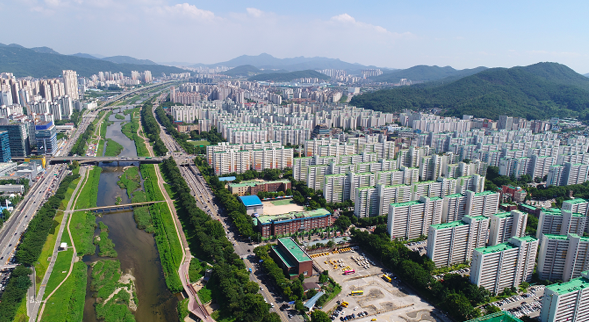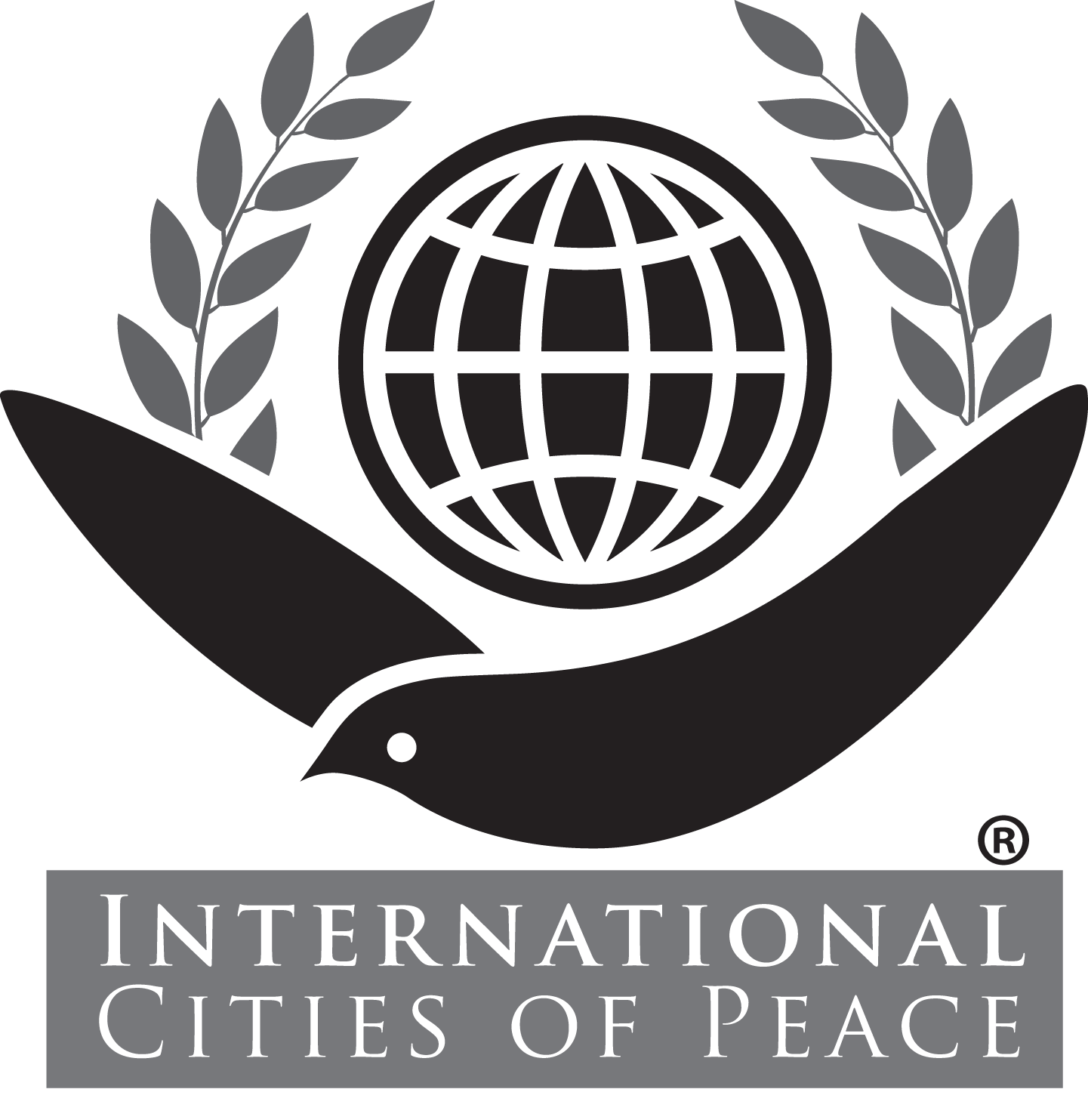Gwangmyeong-si, Gyeonggi-do, Republic of Korea: International City of Peace
We welcome Park Seung-won, Mayor of Gwangmyeong City, and the citizens of the Gwangmyeong community as they establish the third International City of Peace in the Republic of Korea. There are many peace initiatives being developed, including the Inter-Korean Peace Railroad, The Gwangmyeong Cave as a Space of Peace, and the Gwangmyeong Special Week for Peace and Empathy.
Note: Introduction page with information primarily at the time of joining International Cities of Peace. For updates, please contact the liaison.
VISION
Create a community in which residents can lead peaceful lives.
Create a culture in which people can enjoy peace in their everyday lives and share it with peaceful cities around the world.
MISSION
- Formulate governmental policies on peace, such as a culture of peace and peace education, in which citizens can participate.
- Create cultural spaces where people can enjoy and find
peace. - Create cultural heritages for peace for future generations.
OBJECTIVES
- Pursue peace based on human respect and human security in everyday life.
- Create a city of peace in which citizens are the leaders and can relate to one another and act on their missions.
- Create a system of peace that protects every individual’s happiness.
- Create a peaceful community in which people are able to find peace of mind with their neighbors.

Envisioning KTX Gwangmyeong Station
as the First Station of the Inter-Korean Peace Railroad
The city of Gwangmyeong and its residents are making great efforts to bring about the designation of KTX Gwangmyeong Station as the first station of the Inter-Korean Peace Railroad that would travel across the Democratic People’s Republic of Korea into the continent of Asia and beyond.
Citizens who envision the realization of this goal have formed the Citizens’ Task Force for the Designation of KTX Gwangmyeong Station as the First Station of the Inter-Korean Peace Railroad (henceforth referred to as ‘the Task Force’) and have offered services, seminars, and music concerts in order to elevate the stature of KTX Gwangmyeong Station and establish the grounds for its designation as the first station of the Inter-Korean Peace Railroad.
Why should Gwangmyeong Station be designated the first station of the Inter-Korean Peace Railroad as well as an International Peace Station? Here we offer an exploration of KTX Gwangmyeong Station’s geographical environment and surrounding area, as well as related initiatives led by the city of Gwangmyeong.
The World’s Only Divided Nation
Korea is the world’s only divided nation, separated by ideological conflict since the Cold War into the Republic of Korea (henceforth referred to as ‘South Korea’) and the Democratic People’s Republic of Korea (henceforth referred to as ‘North Korea’). Despite hostilities, the two Koreas have consistently cooperated with each other in order to put an end to the unstable armistice regime on the Korean Peninsula and establish a permanent and stable peace regime through the July 4th South-North Korea Joint Statement (1972), the Inter-Korean Basic Agreement (1991), the June 15th South-North Joint Declaration (2000), the October 4th South-North Joint Declaration (2007), and the Panmunjom Declaration (2018).
Since beginning its tenure, the current Moon Jae-in administration has proposed the Northeast Asia Plus Community of Responsibility as its medium and long-term vision for peaceful cooperation in Northeast Asia encompassing inter-Korean relations and the peaceful reunification of Korea. It has continued to advance inter-Korean cooperation within the framework of envisioning a new economy on the Korean Peninsula, and this keynote will extend into the next administration.
KTX Gwangmyeong Station:
The Largest of the 60 Stations on the South Korean High-Speed Railroad
KTX Gwangmyeong Station is located in Iljik-dong, Gwangmyeong City, encompassing a land area of approximately 264,000㎡ and a building area of 48,000㎡. The station building is one of the best symmetrical steel frame buildings in South Korea with an area of approximately 6.7 soccer fields combined—a structure unmatched in size by the 670 or so railway station buildings scattered across the nation. Embodying the elegant curve of hanok eaves and beoseon, traditional Korean socks, in an effort to evoke traditional Korean aesthetics, the station building boasts a glass ceiling that allows delicate and pleasant natural light to shower into the structure. This gives the building the feel of a bustling airport during the day and the feel of an otherworldly spaceship by night.
Gwangmyeong Station was conceived before the launch of KTX to divert train traffic from Seoul Station. Originally named “South Seoul Station,” the station was renamed “Gwangmyeong Station” in 2001, a year after its construction began. Though the sprawling station lost its function as the first station of KTX as originally conceived by the South Korean government, KTX Gwangmyeong Station is now rapidly emerging as the shopping central of the southern greater Seoul area. With various shopping malls within 1㎞ of the station, as well as the Seohaean Expressway and the Second Gyeongin Expressway in its vicinity, Gwangmyeong Station is frequented by shoppers from around the nation.

Peaceful Living in Gwangmyeong~!
2021 Gwangmyeong Special Week for Peace and Empathy

For five days from October 7 to 11, 2021, the city of Gwangmyeong hosted the 『2021 Gwangmyeong Special Week for Peace and Empathy』 in locations all across the city, such as the Gwangmyeong Cave Media Tower, on the theme of ‘Peaceful Living in Gwangmyeong~!’ The Special Week was planned to establish actionable peace as the city’s policy direction moving forward and to build a consensus for peace within the everyday lives of Gwangmyeong residents. The city of Gwangmyeong is planning for the reunification of Korea by envisioning KTX Gwangmyeong Station and Gwangmyeong Cave as the starting point for inter-Korean peace and is building towards peace that protects the happiness of individuals, together with its residents.
Download FileWeek of Peace and Empathy
Gwangmyeong Cave, a Space of Peace
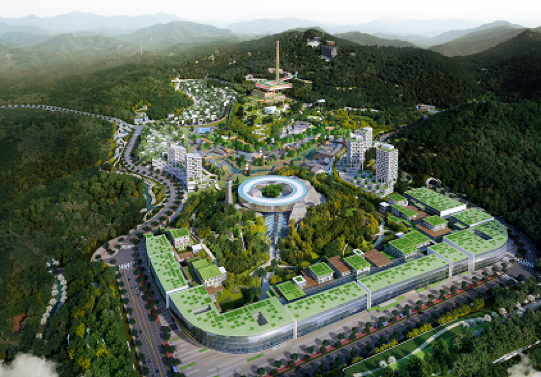
During the Japanese colonial period, Gwangmyeong Cave was a site of exploitation where the human rights of Korean people were ruthlessly violated. The city of Gwangmyeong plans to remember the painful history surrounding Gwangmyeong Cave and create a refuge of peace in the area.
Download FileGwangmyeong Cave
LETTER OF INTENT
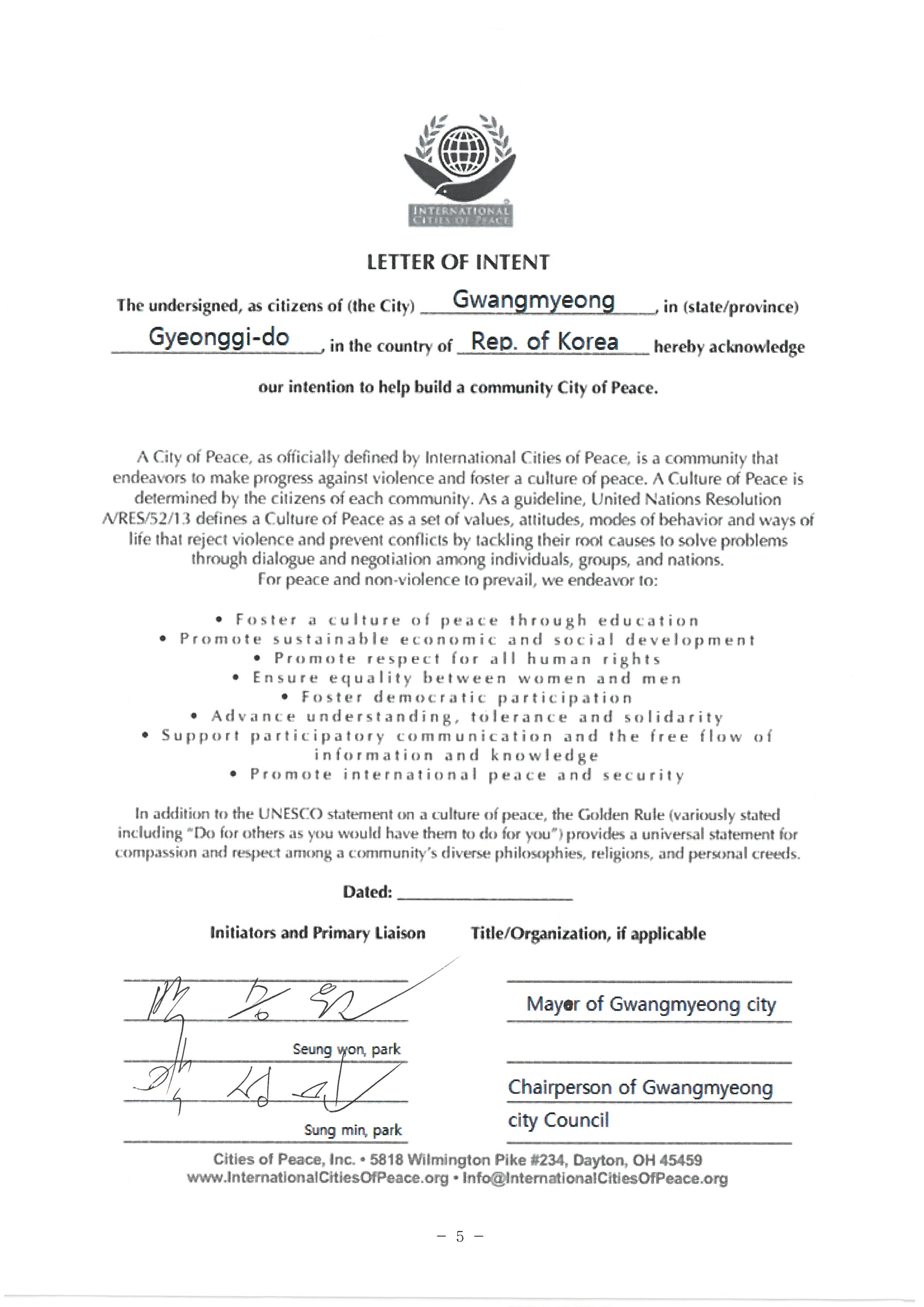
DIGNITARY
Park Seung-won, Mayor of Gwangmyeong City
Education
Deoksan High School (The 26th graduation)
March 1985 ~ February 1994 Hanyang University (Major : Korean language and literature)
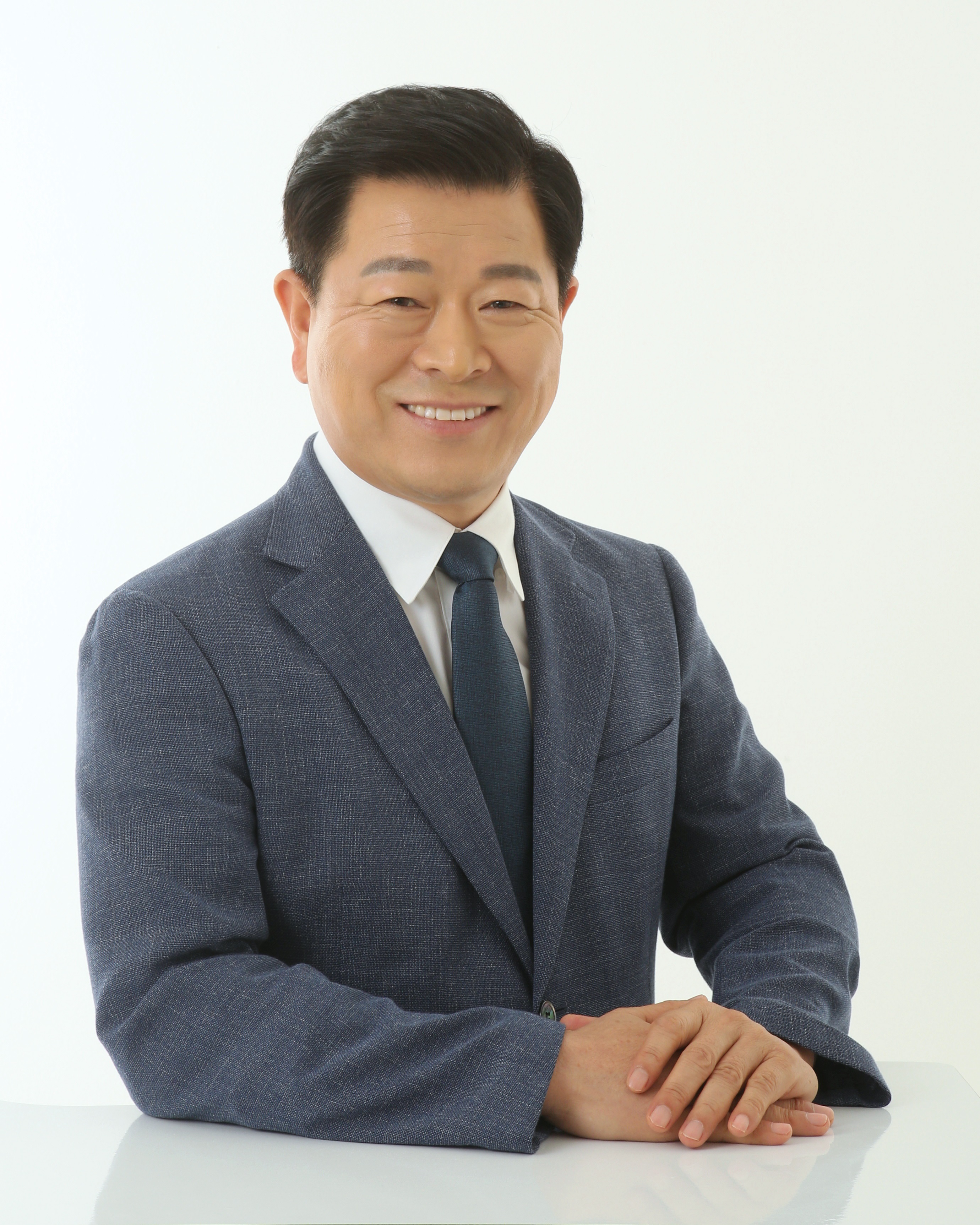
Career
July 2018 ~ Present Mayor of Gwangmyeong City of Gyeonggi-do (The 7th local election)
April 2021 ~ Present Operation committee member of the Inter-Korean Exchange and Cooperation Forum of the National Association of Mayors
May 2021 ~ Present Member of the Local Internalization Council of the Governors Association of Korea
April 2021 ~ Present Co-chairman of the Planning Management Committee of the Urban Regeneration Governance Forum
April 2021 ~ Present General chairman of the Planning Committee of the Korea Democratic Party Leadership Council for Autonomy Decentralization
February 2021 ~ Present Committee member of the Special Committee on Public Communication of the Presidential Committee for Balanced National Development
February 2021 ~ Present Promotion member of the Special Committee on Carbon Neutrality of the Local Governments Council of the Democratic Party of Korea
January 2021 ~ Present Director of the Operation Committee of the Korean Association of Lifelong Learning Cities
January 2021 ~ Present Secretary general of the Local Governments Committee of Responding to the Climate Crisis·Energy Convergence
January 2021 ~ Present Member of the Local Governments Promotion Council of the TF for Essential Workers of the Democratic Party of Korea
January 2021 ~ Present Vice-chairman of the National Social Economic Committee of the Democratic Party of Korea
December 2020 ~ Present Vice-president of the Local Governments Council of Autonomy Decentralization
October 2020 ~ Present Standing member of the Good Local Governments Committee of the Democratic Party of Korea
July 2020 ~ Present Secretary general of the National Committee of the Heads of the Primary Local Governments of the Democratic Party of Korea
June 2020 ~ Present Vice-president of the Korean Human Rights Cities Council
January 2020 ~ Present Vice-president of the Local Governments Council for the UNICEF Child Friendly Cities
October 2018 ~ Present Vice-president of the Local Governments Council for Community Building
January 2019 ~ December 2020 Inspection commissioner of the Korean Association of Lifelong Learning Cities
August 2018 ~ December 2020 Secretary general of the Local Governments Council of Autonomy Decentralization
September 2018 ~ August 2019 Secretary general of the Gyeonggi-do’s Association of Mayors
January 2018 ~ January 2020 Member of the Presidential Decentralization Committee of Local Governments
April 2017 ~ May 2017 Co-chairman of the Election Polling Committee of Gwangmyeong(eul) for Moon Jae In, the Candidate for the Presidency
June 2016 ~ March 2018 Representative member of the Democratic Party of Korea of the 9th Gyeonggi-do Provincial Council
July 2010 ~ June 2018 Member of the 8th·9th Gyeonggi-do Provincial Council
July 2006 ~ July 2007 Advisory Member of the President Roh Moo-hyun’s Committee for Balanced National Development
June 2004 ~ June 2006 Member of the 4th Gwangmyeong City’s Council
August 2002 ~ April 2004 Chief secretary of Baek Jae Hyun, Mayor of Gwangmyeong City
January 2000 ~ April 2002 Head of the Gwangmyeong City Community Service Center
January 1997 ~ December 1998 Secretary general of the Gwangmyeong City Lifelong Community Center
May 2021 ~ Present Member of the Local Internalization Council of the Governors Association of Korea (~April 30, 2023)
Publications
2014 <Let’s learn and share>
2017 <Decentralization that changes my life>
CONTACT INFORMATION
To contact or support this initiative:
OFFICIAL LIAISON
Gyu yun, Choi
Department of Autonomy and Decentralization
Gwangmyeong-si, Gyeonggi-do,
Republic of Korea
ABOUT GWANGMYEONG (from Wikipedia)
◆ Geography
Located at the center of western Gyeonggi Province, Gwangmyeong borders Seoul Metropolitan City on the east and north, Siheung and Bucheon on the west, and Anyang on the south.
With a total area of 38.5㎢, the city is home to Gureum Mountain and Dogonae Hill, both considered to be at the end-point of the Gwangju Mountain Range, at the city’s center. However, the city overall is on low-lying plains between 30m and 290m above sea level.
Gwangmyeong boasts one of the most convenient transportation systems among the cities in Gyeonggi Province adjacent to Seoul Metropolitan City. For one, the city is traversed by Line 7 of the Seoul Metropolitan Subway. It is also close to the Gyeongbu Line and the Gyeongin Line and is connected to KTX (Korea Train eXpress) via Gwangmyeong Station as well as to the Seohaean Expressway, the Second Gyeongin Expressway, and the Suwon-Gwangmyeong Expressway.
A city with a strong railway system, Gwangmyeong is conveniently located for access to Bucheon and Gangnam via Line 7 on the subway. Since the opening of Gwangmyeong Station in 2004, and increased KTX service at the station, it has become easier to travel outside the city limits via KTX.
◆ General Status (On Dec. 1, 2021)
Population: 294,458 residents in 120,290 households (Population at the time of designation as city in 1981: 153,997)
Area: 38.50㎢
Administrative Districts: 19 dongs, 510 tongs, 3,249 bans
arts of Soha-dong was developed to newly built public apartment complexes.
Note: If information or photos used here are copyrighted, please contact us and we will immediately delete the copyrighted material.
